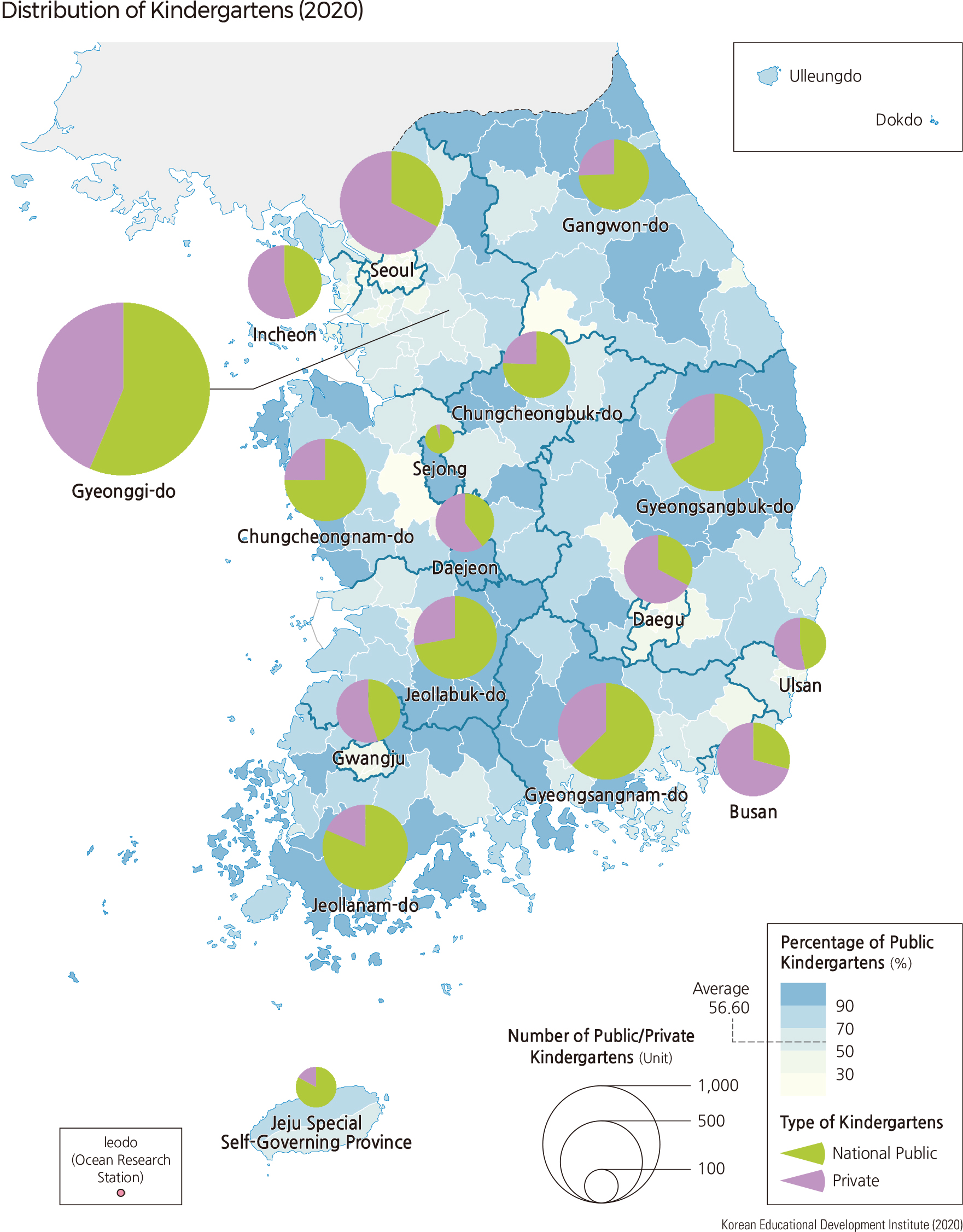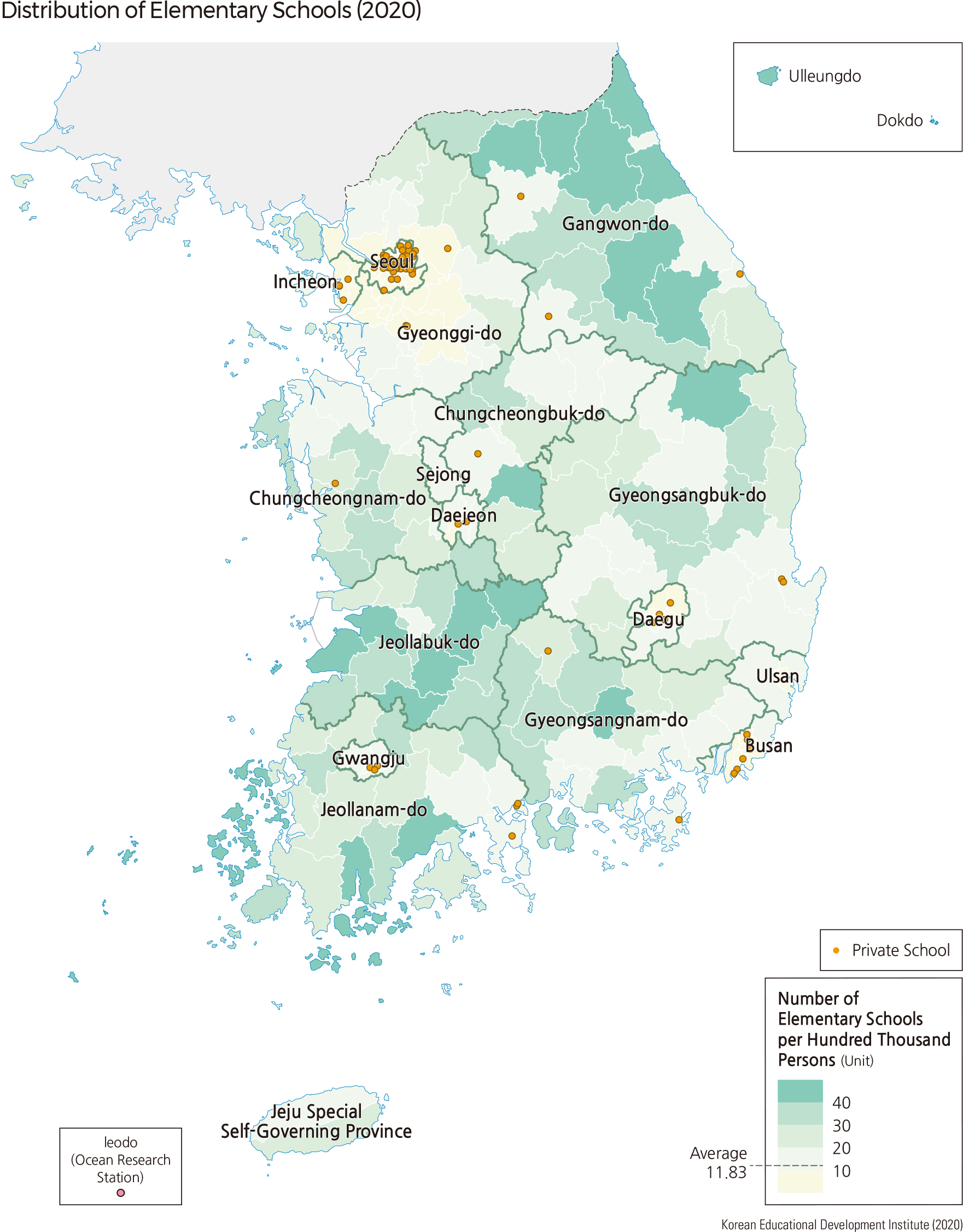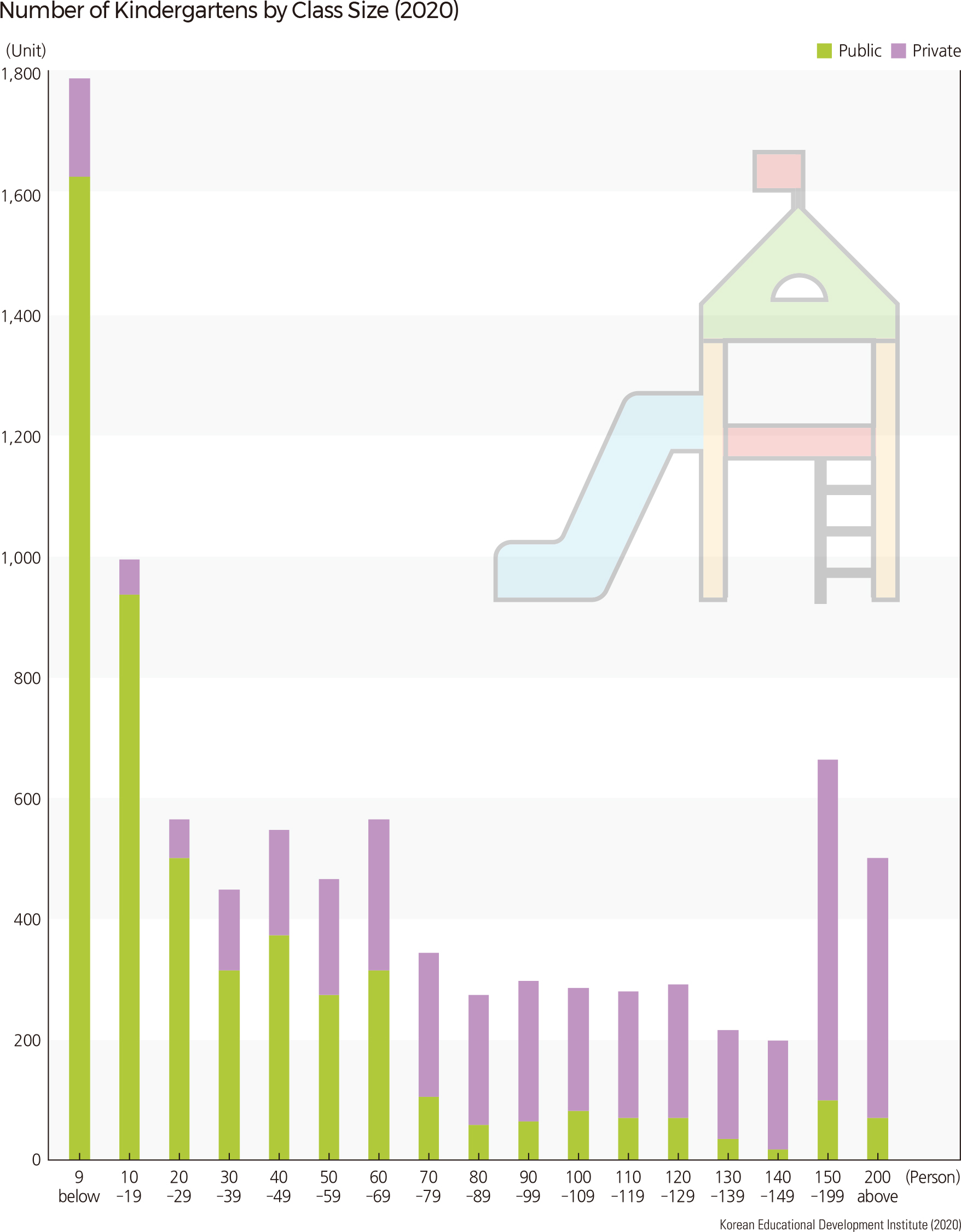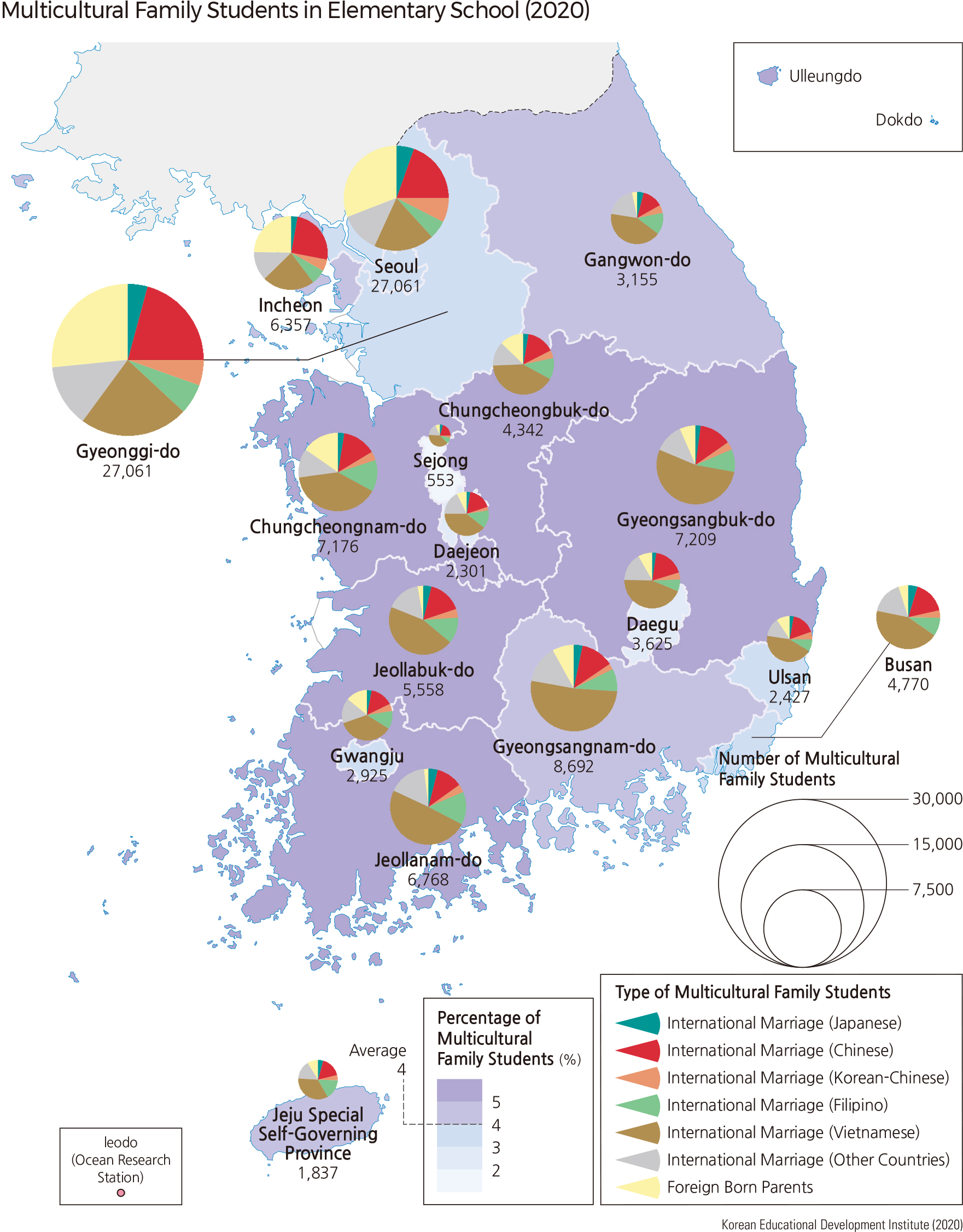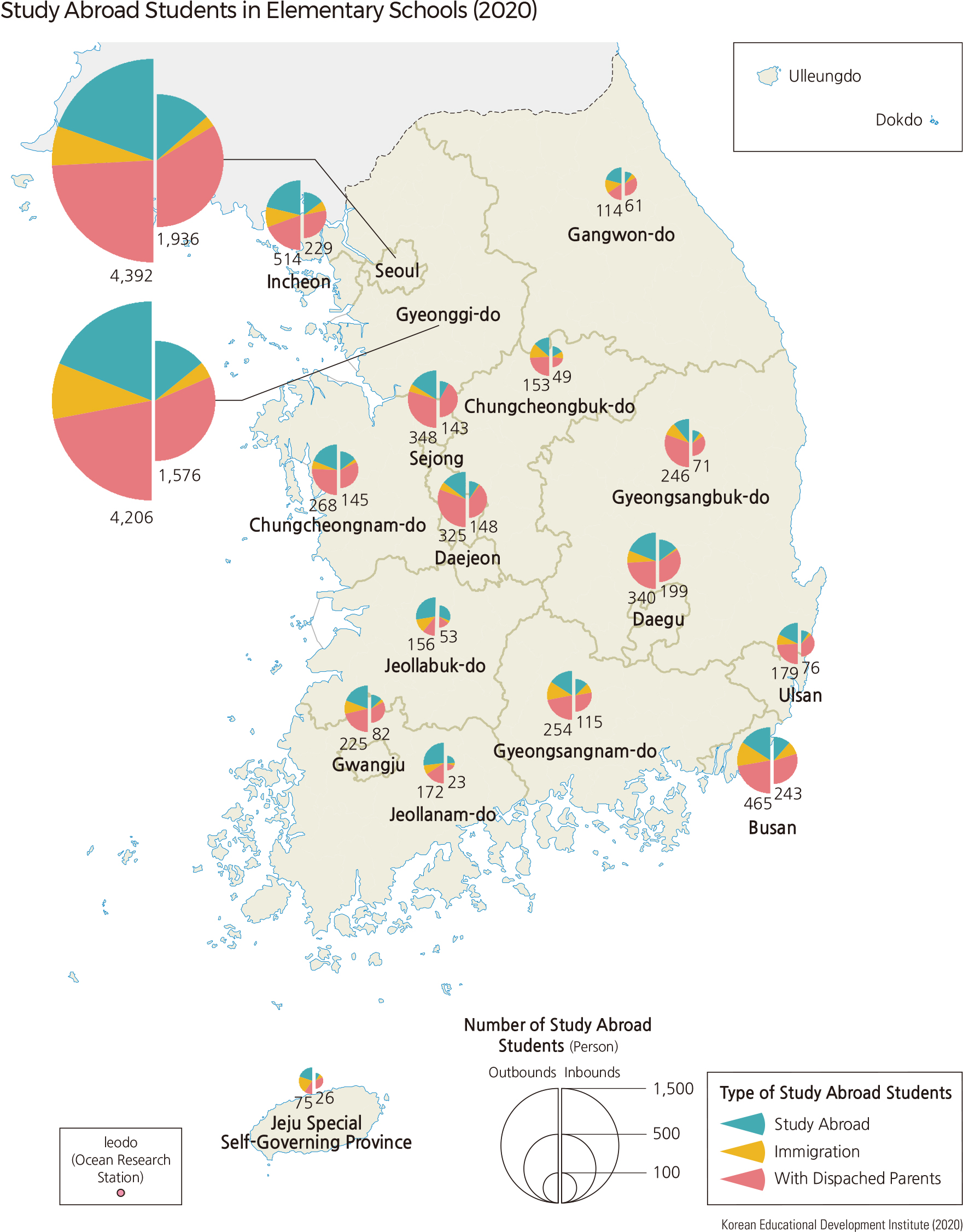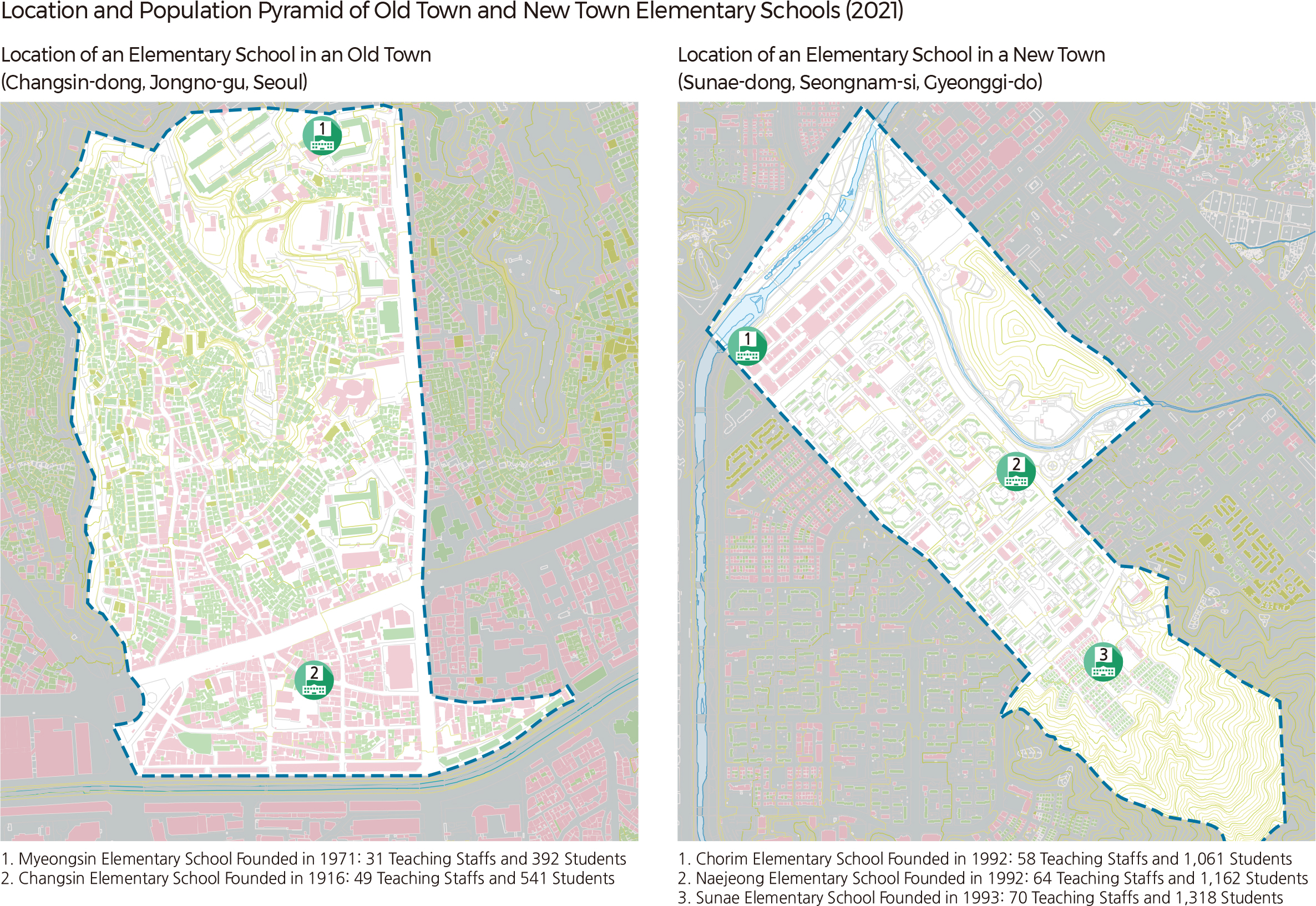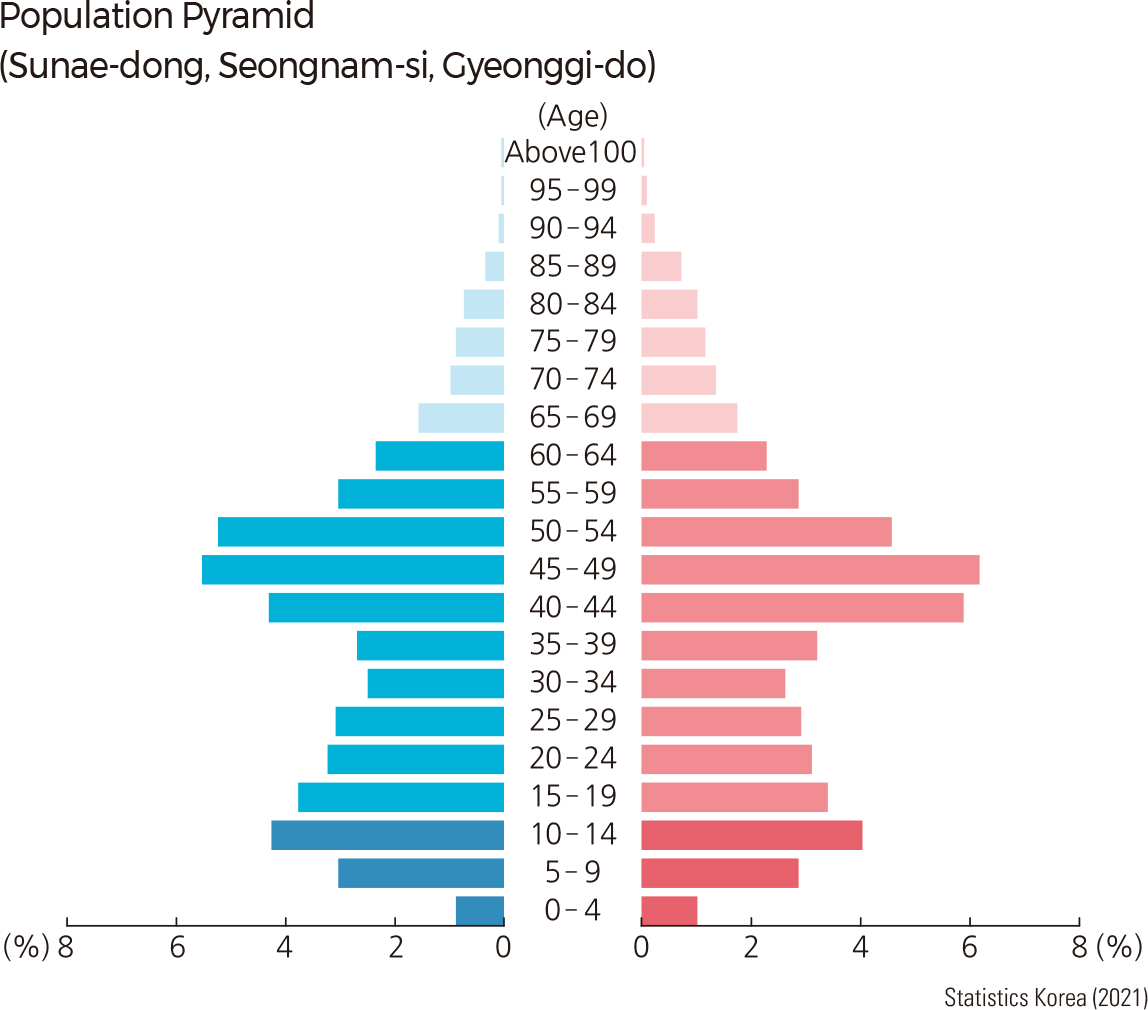English III 2021
Kindergartens are operated by national and public, corporate, and private institutions. National and public kindergartens primarily operate as elementary school-affiliated institutions. Various types of private kindergartens with unique educational goals operate in areas with a large kindergartener population. National and public kindergartens are important for preschool education in areas with few kindergarten-age children. Most elementary schools are national and public. Private elementary schools are concentrated in certain areas. Many elementary schools have been closed in areas with declining populations. In contrast, a large number of schools have been newly established in newer towns that are experiencing a continuing population influx. With the increasing influx of immigrants, marriages of Korean and non-Koreans have increased. As a result, the number of elementary school children from marriages between Korean and non-Koreans and foreign families has increased. Students of foreign families are concentrated in Seoul and Gyeonggi-do, while many students from marriages between Korean and non-Koreans live in areas where the proportion of international marriages is high. In addition, elementary students study abroad due to emigration, their parents working overseas, and a choice to study abroad at an early age. The location of elementary schools is closely related to residential zones in urban areas and to settlement conditions in rural areas. Elementary schools in old downtown areas were often established in the early stages of urban development and rapid urbanization. There tend to be fewer students and classes in these areas due to population loss to the suburbs. Meanwhile, in the new residential areas, the location of elementary schools is generally determined by the planning process. Families with school-age children prefer the newly developed areas because the commuting distance to an elementary school is very short. On the other hand, many rural elementary schools have been closed because of declines in the number of school-age children. As indicated on the map, Miwon-myeon, Cheongju-si, Chungcheongbuk-do, as a typical rural area, has experienced an outflow of young people, resulting in the closure of many elementary schools. Looking at this by time period, many schools were established during the 1960–70s when many Korean baby boomers entered elementary school. Since the mid-1980s, branch schools that had been added were closed down, usually leaving only schools in the rural centers. Recent trends also indicate that school closings are not confined to rural areas but also are occurring in old town sections of cities due to the lack of students. Consequently, the number of students per class has been steadily decreasing, and some of the closed schools have been sold or used as educational, recreational, cultural, public sports, and income-increasing facilities. |
